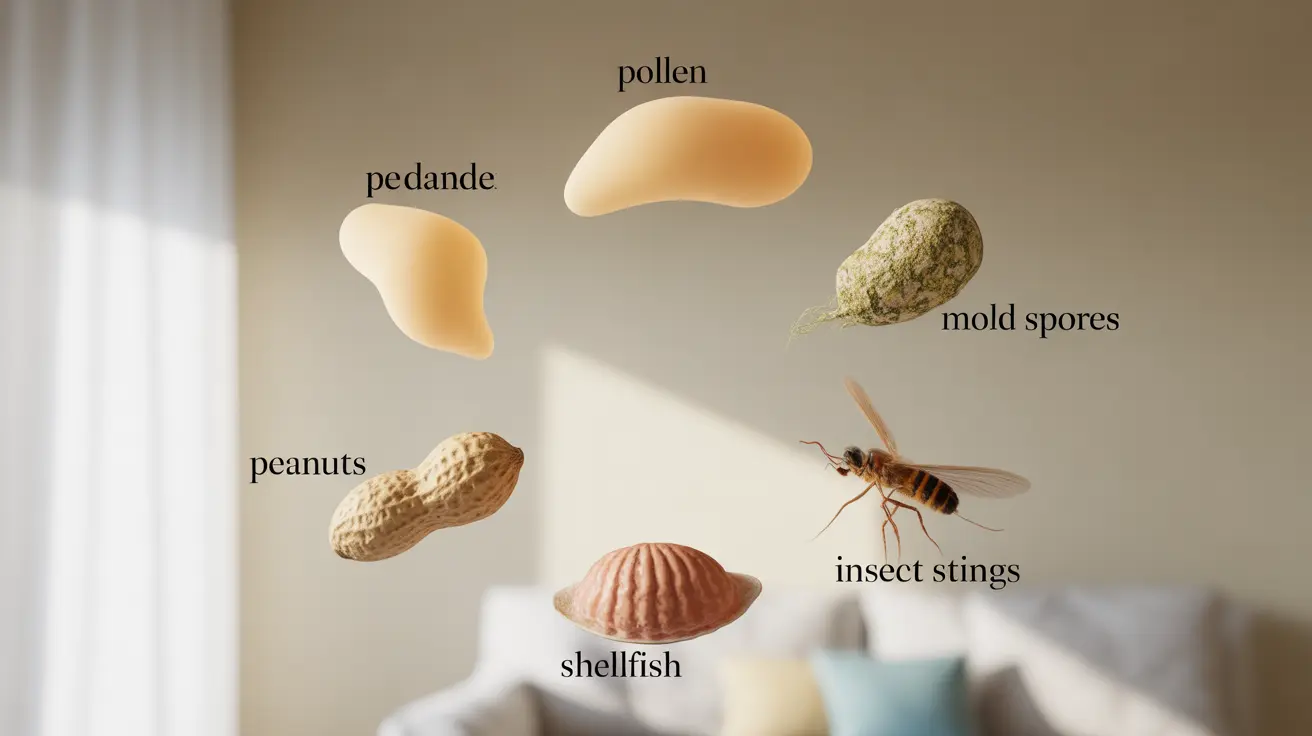Allergies affect millions of Americans, manifesting in various forms and triggered by different substances in our environment. Understanding the different types of allergies is crucial for proper diagnosis, management, and prevention of allergic reactions. This comprehensive guide explores the most common types of allergies, their triggers, and effective ways to manage them.
Food Allergies: Understanding Common Triggers and Prevention
Food allergies occur when the immune system reacts abnormally to specific foods. Common food allergens include peanuts, tree nuts, milk, eggs, soy, wheat, fish, and shellfish. Symptoms can range from mild (hives, itching) to severe (anaphylaxis), making proper identification and management essential.
To identify food allergies safely, work with an allergist who can perform:
- Skin prick tests
- Blood tests
- Oral food challenges under medical supervision
Management strategies include strict avoidance of trigger foods, careful label reading, and carrying emergency medication like epinephrine auto-injectors when prescribed.
Seasonal Allergies and Hay Fever
Seasonal allergies, also known as allergic rhinitis or hay fever, are triggered by airborne pollen from trees, grasses, and weeds. These allergies typically follow predictable patterns based on local pollen seasons.
Common Symptoms and Treatment Options
Typical symptoms include:
- Sneezing and nasal congestion
- Itchy, watery eyes
- Runny nose
- Scratchy throat
Effective treatments include antihistamines, nasal corticosteroids, decongestants, and immunotherapy (allergy shots) for long-term relief. Many people find relief by monitoring pollen forecasts and limiting outdoor exposure during peak pollen times.
Pet and Indoor Allergens
Pet allergies are triggered by proteins found in animal dander, saliva, and urine. While cats and dogs are common culprits, any furry animal can cause allergic reactions. Indoor allergens also include dust mites and cockroach particles.
Managing Indoor Allergies
Control measures include:
- Regular cleaning and vacuuming with HEPA filters
- Using allergen-proof bedding covers
- Maintaining proper humidity levels
- Keeping pets out of bedrooms
- Regular air filter replacement
Mold Allergies and Environmental Control
Mold allergies can occur both indoors and outdoors, with symptoms similar to other respiratory allergies. Indoor mold growth often results from excess moisture and poor ventilation.
Prevention strategies focus on controlling moisture levels, improving ventilation, and promptly addressing water damage. Professional mold remediation may be necessary for extensive problems.
Insect Sting and Drug Allergies
These potentially dangerous allergies require special attention due to their risk of severe reactions. Insect sting allergies commonly involve bees, wasps, hornets, and fire ants. Drug allergies can occur with any medication but are most common with antibiotics like penicillin.
Safety Measures and Emergency Preparedness
Essential precautions include:
- Wearing medical alert jewelry
- Carrying prescribed emergency medication
- Having an action plan for accidental exposure
- Informing healthcare providers about known drug allergies
Frequently Asked Questions
What are the most common types of allergies and their typical triggers? The most common types include food allergies (particularly to nuts, dairy, and shellfish), seasonal allergies (pollen), pet allergies (dander), dust mite allergies, mold allergies, and insect sting allergies.
How can food allergies be identified and managed to prevent severe reactions? Food allergies are identified through medical history, skin prick tests, blood tests, and oral food challenges under medical supervision. Management includes strict avoidance of trigger foods, careful label reading, and carrying prescribed emergency medication.
What treatments are effective for seasonal pollen allergies and hay fever symptoms? Effective treatments include oral antihistamines, nasal corticosteroids, decongestants, and immunotherapy. Additional measures include monitoring pollen forecasts, keeping windows closed during high pollen counts, and using air purifiers.
How do pet allergies and mold allergies affect respiratory health, and what can be done to reduce symptoms? These allergies can cause breathing difficulties, coughing, wheezing, and nasal congestion. Reduction strategies include environmental controls, regular cleaning, proper ventilation, and possibly medication. For pet allergies, limiting exposure and using HEPA filters can help.
What precautions should people with insect sting or drug allergies take to avoid emergencies? People should wear medical alert jewelry, carry prescribed emergency medication, avoid known triggers, and have an emergency action plan. For drug allergies, maintain clear communication with healthcare providers about allergies and always verify medications before taking them.




